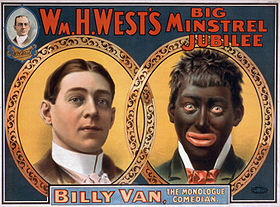I got a little worried while viewing the Broadway clips from …. Blog because the objective is to find ways technology
was used in a good way.Growing up in this generation, technology is almost
everything, and has definitely put its stamp on most of our world. I look at
these clips waiting for some phenomenal technologically advanced set, when in
reality, most of the clips focus on lighting, costumes and of course the music.
I decided to take a step back, and consider the technology I may consider
simple, and look at it for the impact it really makes on the show.
1.Time Heals Everything
I have always
wondered what made a concert so great! I mean it is usually just one person and
the band on stage, and you may not be
able to see them well depending on the seat. What makes us able to feel the
emotion of the song, other than the volume of the speakers… the lights! I
realize it is the lights and no matter how simple the song or the lights,
everything adds to the grand scheme of the performance. A simple example of
this is Bernadette Peters performing Time Heals Everything: Score written by Jerry
Herman. The piece begins with red and blue lights. There is a low, spotlight on
the single voice performing. The saxophone in the piece mimics the performers
voice and the rest of the lights mimic the intensity of the orchestra. Initially
there is less red light and it is surrounded by the blue, but as the music’s
intensity grows, the red light grows as well.
2.
Man of La Mancha
I
am not familiar with this piece, but I understood the content of the piece. The
man sung about triumph and hi “glorious quest”. The costumes of the two
performers were appropriate to the Spanish style story, and the music played a big
part, A lot of the text touched on heavenly things, stars, and the stage light
brought the drama of the song alive. The lights were dim, like a summer’s
night, almost as if it was lit only by the stars and the moon. As the man’s spirit rises in his “quest” he sings more passionately. At this time, he was
also lit by two bright lights, like the moon found him specifically and the
woman on the stage fell into the shadow as the lights dimmed down. At the very
end, the sung “to reach the unreachable star” and held the end note while he
raised his hand. Of course to ad d to this, the same bright lights found him again
and the entire background fell into the shadows.
3.
The Goodbye Girl
I loved this one
partly because im a romantic! But mainly because in theater you really must
figure out how to provide just enough visual information so that the viewers
understand what they are seeing. One of the videos we watched in class said it
best, people know they are going to the theater so they fill in the blanks. I
liked this set because the it really looked like the top of a building, and the
lighting added to this look, with the ground being lit, the backdrop being lit
(the night sky) and the props of the set being lit as well.
1. Broadways lost
Treasures: My One and Only:
I am not familiar
with the story line of this show but I really =enjoyed this 5 min clip of what I
will call the wedding dance! It was a simple set with low blue lights and a
moving stage separator that had my one and only shining in big stage lights. The
“coolest” firm of technology was probably the little bit of smoke that was used
when the bride and groom entered the dance. I choose this piece because of the
dance itself as well as the costumes. They were a big part of how the dance was
perceived because the it was supposed to be so exciting the costumes were
designed were they had a lot of movement. The choreography reflected this
excitement as well.
2.
The Grand hotel,
“Take a Glass” was really cool. The background was this contour of a hotel
building in little lights! And the dancers were in costumes of normal men and
hotel maids. The cool part was the flexible bar that the two main dancers used
for their performance. This flexible bar was the most important part of the set
because it served as the bar top where the two men took a drink. It was also
the support for the “drunk dancer” to use in order to fully execute his
character and the difficult tap dance number he had to perform. I thought it
was a simple but creative way for his drunken character to really be shown off.


